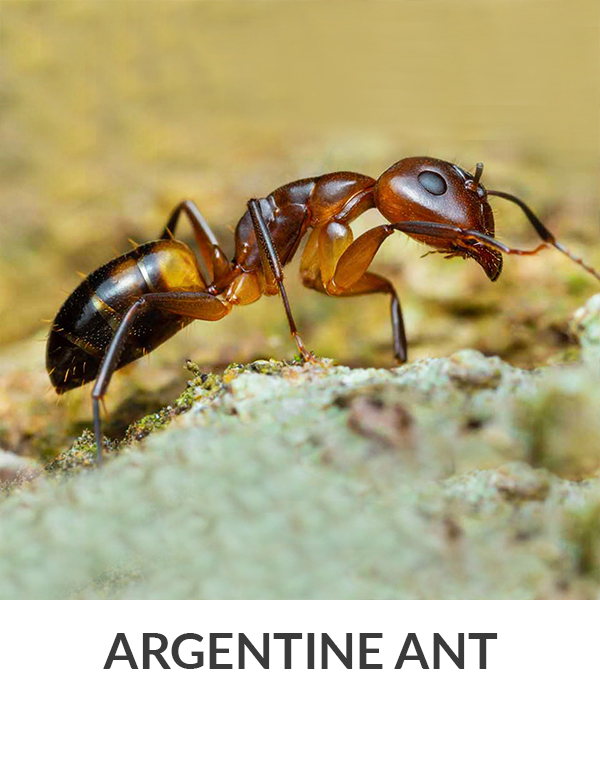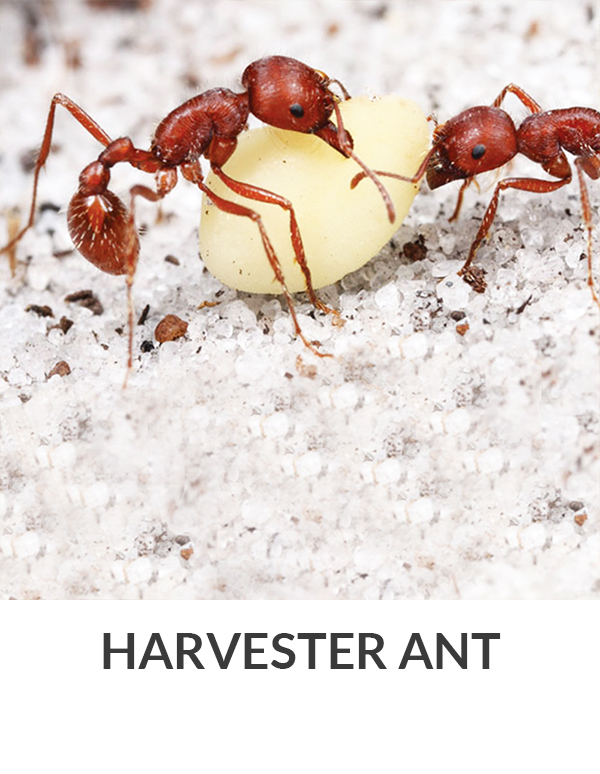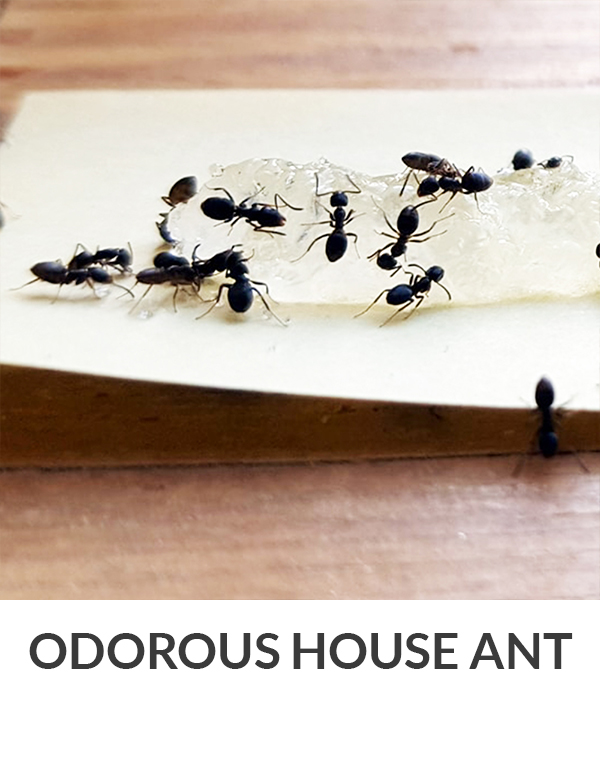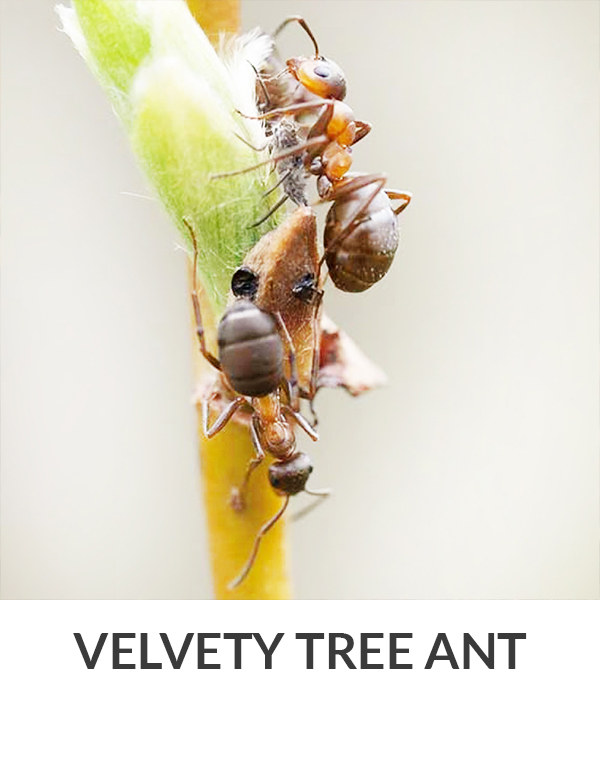
Ants

Ants are eusocial insects of the family Formicidae and belong to the order Hymenoptera. There are more than 12,400 species of ants throughout the world. In California, there are about 270 species, but the most common ants that you are going to find in your house are:
- Argentine Ant;
- Carpenter Ant;
- Harvester Ant;
- Little Black Ant;
- Odorous House Ant;
- Pharaoh Ant;
- Fire Ant;
- Thief Ant;
- Velvety Tree Ant.
Ants are among the most prevalent pests in households invaders to find food and water. Food preferences vary among ant species but may include fruits, seeds, nuts, fatty substances, dead or live insects, dead animals, and sweets. Ants also enter buildings seeking for warmth and shelter, or refuge from dry, hot weather or flooded conditions.
Ants usually nest in soil; nest sites vary with species but are often found next to buildings, along sidewalks, or in close proximity to food sources such as trees or plants that harbor honeydew-producing insects. They perform many useful functions in the environment, such as feeding on other pests (e.g., fleas, caterpillars, and termites), dead insects, and decomposing tissue from dead animals.
Ants form colonies that range in size from a few dozen predatory individuals living in small natural cavities to highly organized colonies that may occupy large territories and consist of millions of individuals. Larger colonies consist of
various castes of sterile, wingless females, most of which are workers (ergates), as well as soldiers and other specialized groups. Nearly all ant colonies also have some fertile males called drones” (aner) and one or more fertile females called “Queens. The colonies are described as superorganisms because the ants appear to operate as a unified entity, collectively working together to support the colony, they also have division of labor, communication between individuals, and an ability to solve complex problems.
The primary ant that nests indoors in California is the Pharaoh ant. In temperate climates, this species nests in warm, moist locations such as inside wall voids, under flooring, or near hot water pipes or heating systems, but is also found nesting outdoors in warmer parts of California.
Although there is some variation among species, a single newly mated queen typically establishes a new colony. After weeks or months of confinement underground, she lays her first eggs. After the eggs hatch, she feeds the white, legless larvae with her own metabolized wing muscles and fat bodies until the larvae pupate. Several weeks later, the pupae transform into sterile female adult workers, and the first workers dig their way out of the nest to collect food for themselves, the queen (who continues to lay eggs), and subsequent broods of larvae. As numbers increase, workers add new chambers and galleries to the nest. After a few years, the colony begins to produce winged male and female ants, which leave the nest to mate and form new colonies.
Argentine ants differ from most other ant species in California in that their nests are often shallow, extending just below the soil surface. However, under dry conditions they will nest deeper in the soil. In addition, Argentine ant colonies aren’t separate but linked to form one large “super colony” with multiple queens. When newly mated queens disperse to found new colonies, they are accompanied by workers rather than going out on their own as most other species do.
DO YOU KNOW THAT ANTS CAN BITE OR STING?
Ants can bite with their pincerlike jaws, although most species rarely do. However, the velvety tree ant is an aggressive biter. A few ants sting, including native fire ants and harvester ants, which are primarily outdoor species and are the most common stinging ants in California. An aggressive stinging ant, the red imported fire ant has been found in various Southern California counties. If you suspect a fire ant infestation, is recommended to report it to your county agricultural commissioner.










